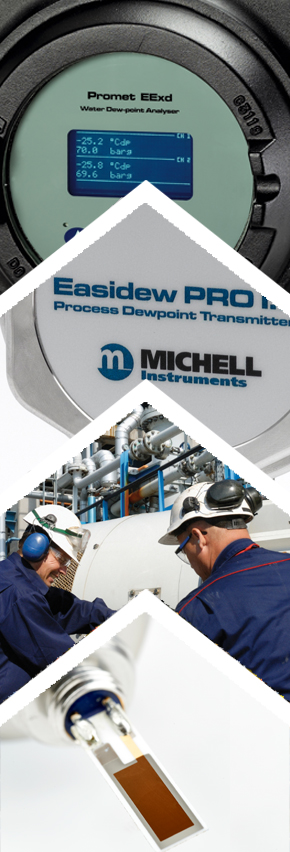|
False assumption #1:
Aluminium oxide moisture sensors are not temperature compensated which makes their readings umnreliable at changing temperatures.
The truth: Any solid-state capacitive sensors will react to temperature changes, not just aluminium oxide sensors. However, all Michell Instruments’ ceramic moisture sensors have a built-in temperature compensation to make sure the readings remain in specification regardless of temperature variations.
In fact, all moisture measurement technologies – including quartz crystal and TDLAS – require a temperature-stabilized environment to provide reliable and accurate readings. This is why in many process applications, the sensing elements for TDLAS and QMA analyzers are located in heated ovens and often measure at elevated temperatures, which make them costly to run compared to the ceramic moisture sensors.
False assumption #2: Aluminium oxide moisture sensors are slow to respond to moisture events.
The truth: In most applications, moisture measurements are used to protect a process by alerting to sudden changes from dry to wet. With the correct sample system, a ceramic transmitter provides an adequate speed of response to protect against moisture events at a fraction of the price of competing technologies.
How the technology works:
The ceramic sensor is made up of thin layers – less than one micron thick for the active layers – on a ceramic base. Water vapour is absorbed into a non-conductive layer which is sandwiched between two conductive layers. The sensor works by passing an electrical current through the conductive layers: when the sensor is totally dry, the current is stopped by the non-conducive central layer. As the moisture in this layer increases the current becomes stronger, and this is used to determine the amount of moisture in the sample gas.
Keeping the layers this thin helps to ensure a good speed of response to changes in moisture.
False assumption #3:Aluminium oxide sensors require a lot of maintenance which is expensive.
The truth: Any sensitive equipment on a manufacturing process will need regular service and maintenance to ensure continued quality of the end product. For many moisture technologies, service and maintenance may involve bringing in specialist engineers or sending parts away for work. While ceramic moisture sensors do need annual re-calibration, removing the sensor for exchange is simple and can be carried out by any competent engineer.
Michell Instruments’ sensor exchange programme for their ceramic sensors makes maintenance and service even easier.
|
 |